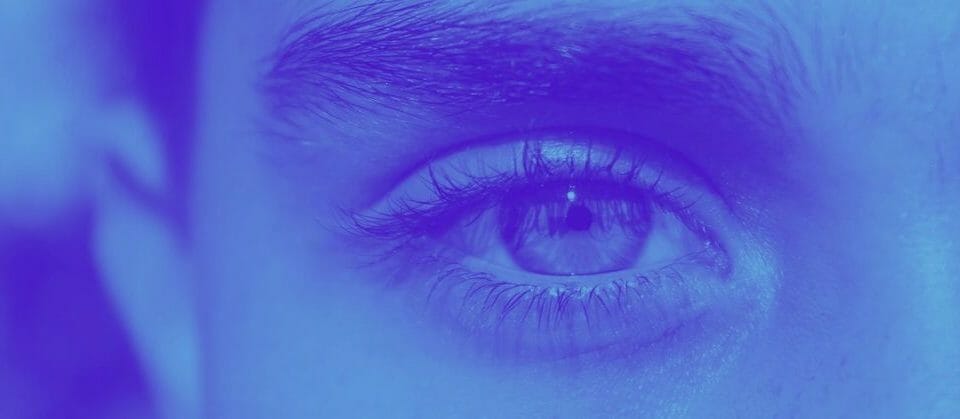Sleep Hygiene: Avoiding a Sleeping Disorder
September 28, 2012Two Common Myths about ADHD
October 8, 2012Bringing Consciousness to Your Anxiety
Most people have felt anxiety. You can be moving through your day and suddenly remember an uncompleted project or begin thinking about an upcoming event, and your body starts reacting. You feel a tightness in your chest or your breath becomes shallow. This is the the grasp of anxiety that has overtaken so many of us modern individuals. Anxiety can become so common within us, that we can live with it for years and not notice its grasp on us and how it drives us.
Those with anxiety know that you cannot just tell yourself to stop worrying. The problem is more deeply ingrained within us. It’s much more useful to be aware of it, notice the affect it has on you, and find ways to work with it.
Anxiety can be good; it can remind us of something we need to do or even help us grow. Anxiety is normal when facing a life-changing event or learning a new skill, but living in constant anxiety can affect our mental and physical state. Many people want to run from the anxiety, not experience it, but only when you become conscious of it in your mind and body, can you learn from it.
Anxiety comes from fear. The amygdala, the part of the brain that produces fear or anger, signals more quickly than you can consciously respond. When you see something that looks like a snake, your body automatically responds. Or maybe you hear a voice that reminds you of how your father raised his voice at you. You feel the physical symptoms quickly and react bodily before you can consciously think of your response.
Much of anxiety comes from fear about what might happen in the future. You become nervous about an upcoming medical test or a flight you will be taking. You start feeling anxiety about scenarios that will never happen. It can even lead you to believe that being anxious can keep bad things from occurring The wiring of neurons in the brain cannot distinguish the difference between real or imagined events and reacts the same way toward each.
We can convince ourselves that anxiety helps us, keeps us safe, or causes us to work better or harder. This wiring makes us feel like we need to feel anxious in order to function at our best. We can hold tightly to our anxiety, not realize that we are wiring ourselves to become more and more anxious. It can be addictive to remain on the high of anxiousness, but anxiety can actually cause lessen function, taking away our creativity and ability to change in a situation.
So how do we let go of the anxiety that has wrapped itself around us? How do you start removing it from your mind and body? First, you need to bring awareness to it. What part of the body is it affecting? Where is the body tightening? Use mindfulness to focus on those areas of sensation. Then, when the physical symptoms show, become aware of your thoughts. What dialogue is taking place that might be causing the anxiety? Anxiety can stem from perfectionism, and you fear failing or making a mistake. Or maybe you start judging yourself too harshly.
Second, notice if there are any emotions yet to be processed. Is there something from your past that relates to this incident? Are you in a fight with your partner or friend? You could be carrying around emotions that affect your anxiety.
Awareness of the mental and physical impacts of anxiety and any unprocessed emotions can lead to more clarity about why anxiety is happening. The following six steps can be your guide to easing that anxiety. It may take a lot of your attention at first but practice can make it an automatic part of your thought process.
1. Bring awareness to where the anxiety is affecting your body. Become mindful of what is tight, where any sensations are occurring.
2. Focus on your breath and concentrate on bringing things center to your heart. Do this for a few minutes to regain your sense of balance.
3. Search yourself for what is causing the anxiety. Run through a checklist of some of the things that have caused anxiety in the past. Do not analyze, just notice what it is.
4. Bring awareness to the thought and ask yourself if it is something you can let go of.
5. If your anxiety persists, focus on any emotions that might be present and causing any anxiety, such as anger, sadness, or bitterness. Is there something you’re worried about finishing? Or are you feeling social discomfort? Ask yourself again if you can let it go.
6. Finally, see if you can replace your anxiety with something warm or pleasurable Remember a wonderful day you experienced or a special moment you had with your partner. Replace the negative feelings with positive feelings.
In recognizing your habitual anxiety and moving through the steps to ease it, you can become more relaxed and kinder to yourself. You can process and release your emotions. Perhaps after some time of practice and awareness, you change this inner energy that has been anxiety for so long into something positive, like joy or creativity.



